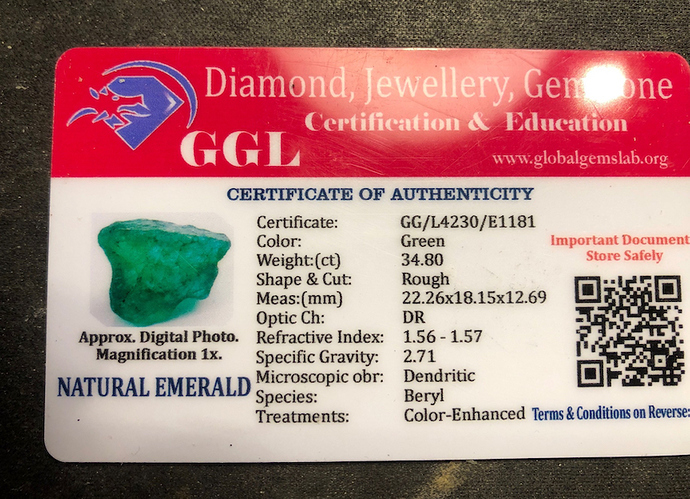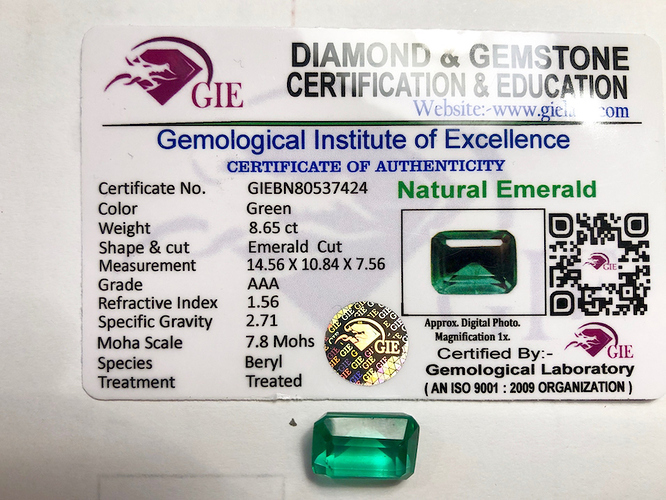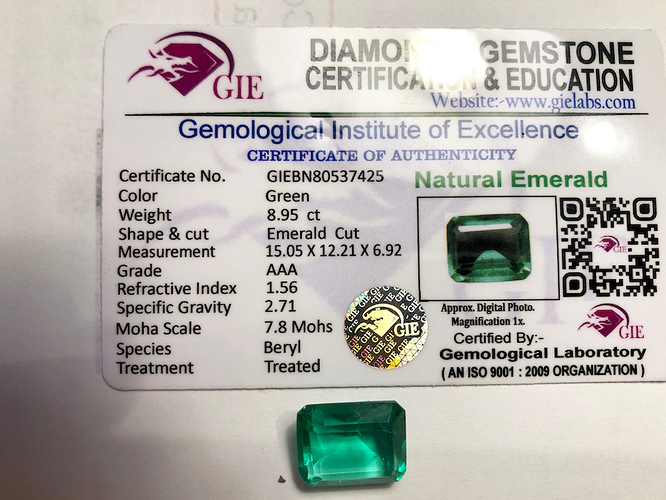My first time on here, so be gentle. Does any organization publish a list, or any sort of information regarding which gemological labs are legitimate businesses? I’m not asking which ones do the best work, or have the best standards, but rather which ones do, or do not issue completely phony certificates. Three cases to illustrate.
This is the certificate that came with a 34.8 ct piece of fractured quartz that was literally dripping green oily dye, and some sort of perfume. I paid $31 for it long ago, and I keep it as a reminder that you get what you pay for. What troubled me most was the certificate.Then yesterday, a neighbor who knows I facet gemstones, especially emeralds, came to me and said he has a friend who invests in emeralds. He said the friend has decided to sell some of them, so he sent two stones along with their lab certification for me to check out. Here they are.
Other than the color being a little pale, and several facet lines that didn’t meet, they were perfect! Far too perfect. I asked if I could keep them overnight to check them more thoroughly, and that’s what I did.
I first checked the specific gravity, with both stones measuring 2.465 against my control emerald which measured 2.71. Next I used a piece of clear quartz that was shiny from tumbling to conduct a quick scratch test. My emerald easily scratched the quartz, but the other two pieces wouldn’t begin to scratch it, and in fact, the sharp corner along the girdle of the fake emerald was quickly worn away in attempting to scratch the quartz.
I didn’t feel I needed to test any further. I’m not positive what the stones are, but I know they aren’t emerald, or even green beryl. I suspect, based on that specific gravity, that they are worthless green glass. At least that’s what I’m going to report to my neighbor.
I tried very hard to find information on the geological Institute of excellence. There were several Internet hits, which were all positive reviews, but as I looked into them, they were all published by the company itself. Every case I’ve found of labs calling something natural emerald, or natural Ruby, when it was nothing more than a worthless rock, originated in India. All of this bothers me immensely! I dread reporting to this man who has invested in emeralds, that his investments are worthless. Is there anything we can do to expose these crooks, or is the best we can do to remain buyer beware?


